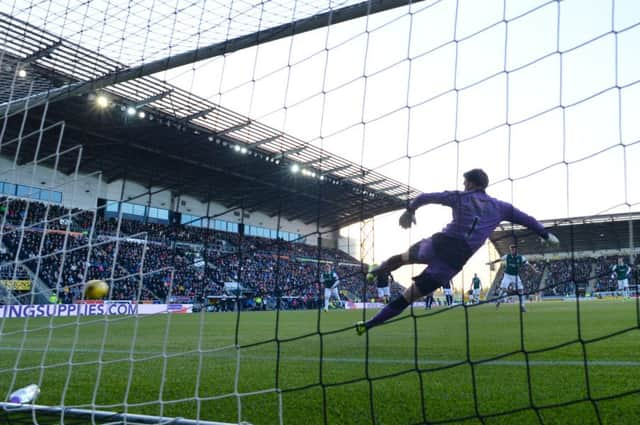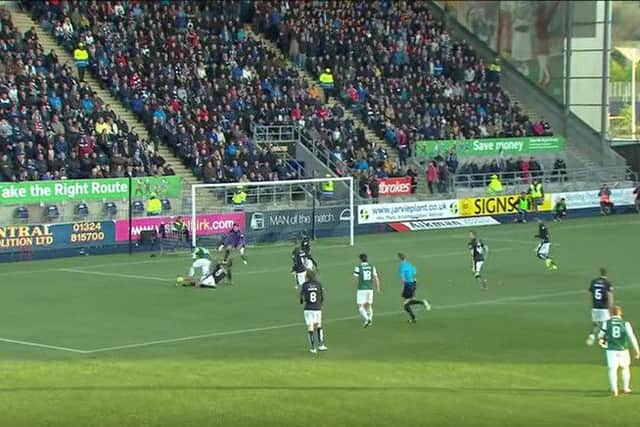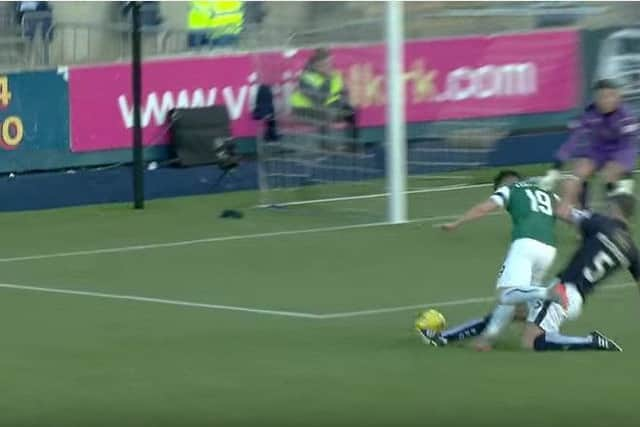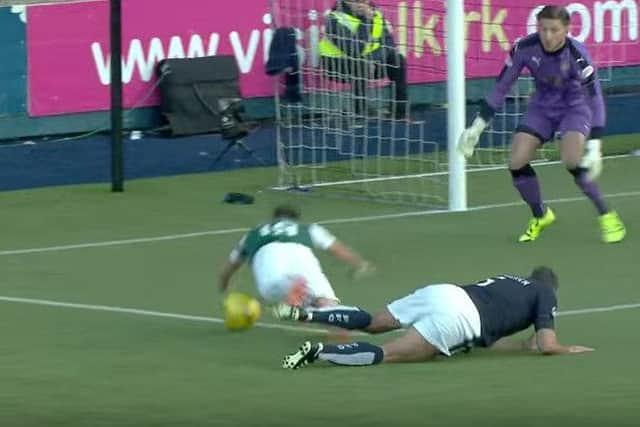Why referee Craig Thomson didn't send off David McCracken
This article contains affiliate links. We may earn a small commission on items purchased through this article, but that does not affect our editorial judgement.


The Falkirk centre back managed to make himself the centre of two highly controversial moments across the two legs, two instances that ended up costing Hibs over the tie. We’ve already looked at the incident in the first leg, where McCracken should have been penalised for his handball inside the penalty area, now we switch our attention of Friday’s match: should he have been sent off for the foul on Keatings?
First of all, it is quite clearly a penalty. McCracken slides in and takes out Keatings. Craig Thomson was in a great position to give it - he followed the play in towards the box and got himself directly behind the challenge - as you can see from Image One. In an ideal world, he’d probably be a little bit further over to the left, but that’s not a fault of Thomson’s. The game moved quickly and he had to prioritise actually being able to see the incident.
Advertisement
Hide AdAdvertisement
Hide AdOur first instinct watching the game was that it was not a red card. It looked like Keatings was going away from goal and had a fairly tight angle. Watching it back, you can see that the decision isn’t quite so clear cut. Image Two shows the point of contact. That position probably represents a clear and obvious goalscoring opportunity for Keatings as he’d expect to score more often than not from there.


However, that gives a false impression. While it appears in this still image, as it did in the replays when they slowed them down, that Keatings is drawing back ready to shoot for goal, when you watch the clip you realise he’s doing no such thing because the ball is running away from him. Therefore, he wouldn’t have gathered the ball in that position.
Based on the speed of the ball and the player, we believe Image Three shows roughly where Keatings might have picked up the ball. He definitely has a chance of scoring from there, but is it really a “clear and obvious” opportunity to score? Look at the position of Danny Rogers. He’s taking up most of the goal by that point.
Regardless, Keatings would still have had a clean shot on goal from close range, making this a really difficult call. You could show it to 10 different referees and probably get five saying it was a red card and the other five saying it wasn’t.
What we can say for certain was that it should have been at least a yellow. One of the key, though unwritten, justifications for a yellow card for unsporting behaviour is a foul which denies a promising attack. There can be absolutely no doubt that, even if that wasn’t a clear goalscoring opportunity, it definitely was a promising attack for Hibs. The only assumption we can make is that, in real time, Thomson thought the ball was going out of play before Keatings got there.


This sort of decision making will, of course, be taken out of the referee’s hands in a couple of weeks time when the new rules on denying a goalscoring opportunity inside the box come into play. Under the new rules, since McCracken made a genuine attempt to win the ball, he wouldn’t be punished with a red card even if the referee thought it was denying a “clear and obvious” goalscoring opportunity.
• Craig Anderson is a former fully qualified referee. He is also the man behind SPLStats on Twitter.
MORE REF REVIEW ARTICLES


THE SCOTSMAN ON SOCIAL MEDIA